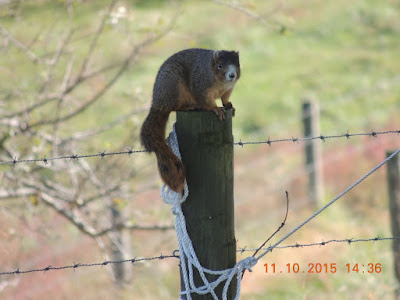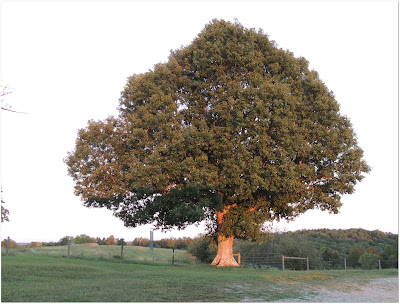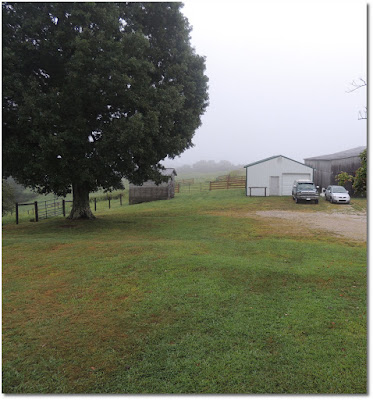Here is the ALBC description of these marvelous brown turkeys.
"The history behind the Chocolate turkey is somewhat vague, but they were common in the Southern U.S. and France before the Civil War which caused a great decline in turkey breeding. Large numbers of breeders were lost during the war and breeding popularity never recovered. The whole population was reduced to twelve birds before they started to make a comeback. Due to the lack of breeding birds then, most chocolate turkeys today are not pure and are carriers of Bronze and Narragansett genes; some may carry Bourbon Red as well.
The name Chocolate describes the color of its feathers, shanks and feet, which are a solid milk chocolate color in adult birds. The chocolate coloration is caused by a combination of the black and brown genes. The gene for black (BB) interacts with the sex-linked gene for brown (e). The genotype for a purebred chocolate is BBee for toms and BBe- for hens. Any bronze patterns and/or white barring, light colored spots in the wings or white tipping in the feathers is a fault in this variety, however is common. Chocolates are one of the largest heritage turkey varieties and are known to be very gentle. Chocolate turkeys are good mothers and chicks are born with coco bodies and white heads.
The meat is flavorful, but not all that different for your average turkey. Chocolates do produce more meat than some other heritage varieties due to their large size with mature weights of toms approximately 33 lbs. and hens 18 lbs. Although larger in size, their health and mobility is not affected. Chocolates are still critically endangered."
We have come to love these brown turkeys, they are the most uniform of the three breeds we have and also we have more hens. They were big poults with heavy legs right from the start and have always been well behaved. No health issues to speak of and vigorous smart poults who went right to eating and drinking. They were a bit less curious than the other breeds but I am not sure if that was attitude or just they were not in such a rush to do things. They always came up but just not first.
A new arrival, the Chocolate Poults have cream colored markings on their heads.
They were vigorous and frisky right from the start. I think this must be a Heritage breed characteristic because all the poults amazed me with their speed, agility and vigor even after a long flight.
Settling in to their new home.
The Chocolates had the lowest mortality of the turkeys. They seemed to do well right from the start, they did not grow as quickly as the Slates but more steadily. New feathers started to come in on them first though. They traveled well and made the trip from Virginia to Kentucky in fine form. They were the first of the poults to find out you can roost on top of the waterer!
Learning to perch.
Chocolate turkeys learn fast and are quite bold. Once they learned to fly/hop they were the ones on top of almost everything. The increased size of the toms has slowed this activity somewhat. When we fed or watered the Chocolate would come up toward us much faster than just for a visit. They made use of the perch we put up right away but I am not sure if it was to perch or look longingly at freedom just outside the window.
Oh....look at that grass!
They took to going out really well and thrived on the introduction of grass and bugs to their diet. They also seemed to start to grow faster, we know the exercise was good for them. They are friendly and always come when they hear us, often staying to be around us after the other turkey's have wandered off. The hens are quite bossy of the chickens and demanding at feeding time, not aggressive or mean just right there! They also fly exceptionally well and often perch in the oak or Maple tree. The Tom's just wait for the girls to come down!
A Chocolate hen happily perched in the Maple Tree.
The Chocolate Tom's have grown the fastest and are reaching breeding maturity faster as well. The hens are quite a bit smaller but a nice size and I think would be fine table birds for a smaller family. Their skin is not white though, it is a bit darker and we will have to see how it looks when we butcher the smaller Tom.
A good morning greeting from a Chocolate Tom is a fun thing!
The adult plumage is stunning in the sun, an incredibly rich glossy brown with brassy highlights. The under feathers are more of a milk chocolate and heavy with downy insulation. The cold does not phase these birds.
In the snow, a Tom and two hens.
They are very nice birds, big, robust and with very good personalities. They range and hunt for bugs and are doing well under our management conditions. They get less commercial ration all the time as we want to see what they will do without costly inputs. From what we are seeing and learning they are a great breed for a homestead and it is sad...no scary, their numbers are so low.
We have high hopes for these turkey's and a lot still rides on weather the hens will sit and go broody and we can hatch some of our own poults. We will also evaluate the table suitability as the lesser Tom's get closer to being meat birds. We want to have them able to reach a good weight on more natural feeds and pasture. As for now....we like these chocolaty colored turkeys even better than Milk chocolate!






















































